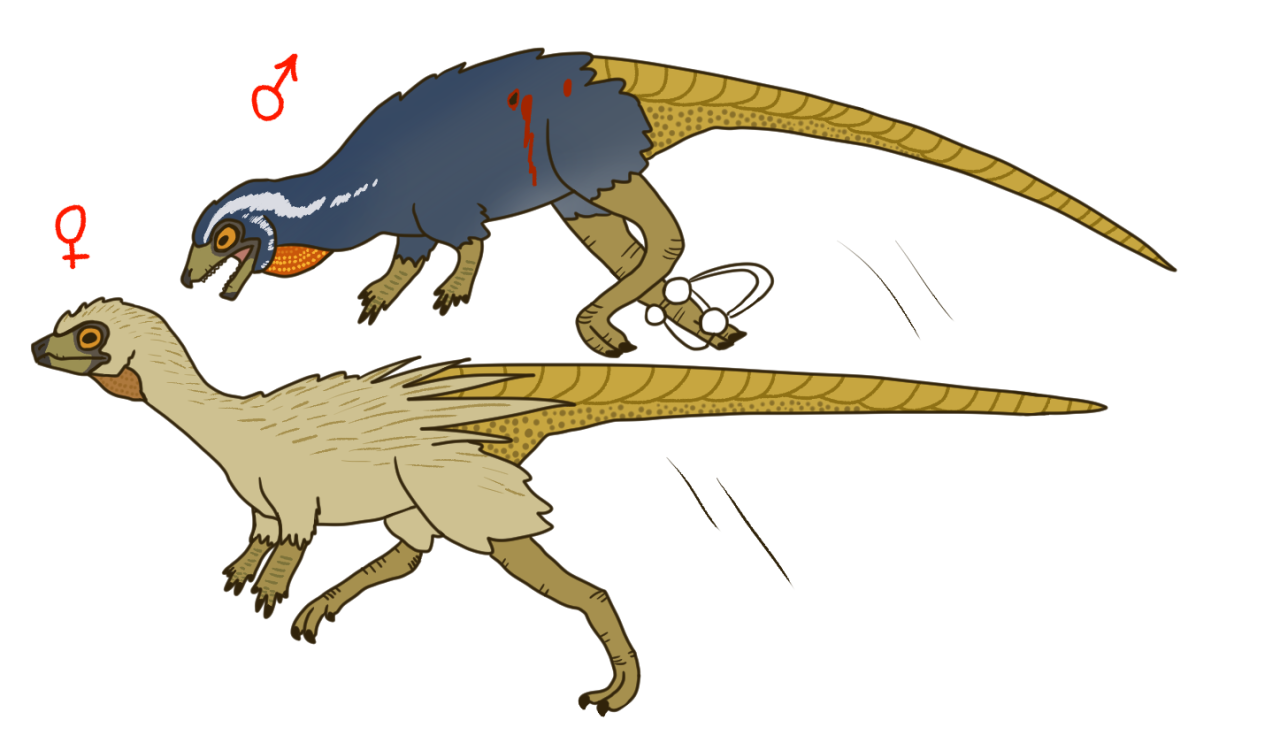Nanosaurus make up the majority of the small, antelope-like positions in Talenta. They are not parti
Nanosaurus make up the majority of the small, antelope-like positions in Talenta. They are not particularly social, but do hang around larger herbivores when eating or sleeping. They are the quickest and most perceptive of the fastieth. Killing one and wearing its pelt is considered a mark of a hunter’s speed and keen eye. Nanosaurs are jumpy like deer, able to leap about 6 feet in the air and out-speed any other fastieth by a country mile. Being able to outrun predators means these fastieth live all about the plains, dry and wet season. They make their presence known by their distinctive scent, somewhat like fish oil. Nanosaurs rarely go into the forests, where their feet are not so sure as on the flat ground. The single variety that does live in forests are smaller and quieter, with stout legs and demure pelts. During the dry season they breed, markedly different from other fastieth. They dig small foxholes with their back legs. Females with their sandy pelts hide in it and puff up the long, thin feathers on their back, disguising themselves as dry plants to protect the eggs. Several subspecies exist around the plains. One prefers the hilly, mountainous terrain around the Mror Holds and is adapted for cold climates. Another, larger one is even more adapted to the cold, sometimes encroaching on the fields of Karrnath. Those that live in the forests are noted above. The final is otherwise similar to the plains subspecies but is smaller and more brightly colored, with orange and blue facial markings in the males. Most males have slate gray plumage that may look black or blue depending on the lighting. They also have white marks, but these are unrelated to dryosaur masks. Females are a monochrome sandy color. But males actually have a better chance at evading predators. Their plumage is very different from their scaly back halves, making them look like two different animals stitched together. This throws off predators. Females don’t have such luck and are more likely to be spotted and hunted outside of the breeding season. So now a third, distinct gender is appearing in the plains subspecies, with females possessing male plumage, but not the elaborate orange dressings. They get the benefit of avoiding predators, but are often overlooked during mating. To fix this they often become aggressively flirtatious with males to get the idea across.–The idea was the male was being hunted, with a trap around its leg. Technically this is a recreation of the Jurassic Park Othnielosaurus, since Othnielosaurus and Drinker got lumped into Nanosaurus. Most of the scale and plumage references was taken from Kulindadromeus. How closely related it is to Nano is questionable, but in lieu of any other scale impressions it was the safest bet. -- source link
#dinosaur#paleoart#nanosaurus#othnielosaurus#eberron#talenta plains#talenta#ecology#world building
